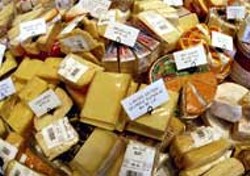Things have changed. Ordering brie has become almost as passé as ordering merlot. Grocers have increased their cheese selections and many more restaurants are adding a cheese course to their menus. One restaurant in New York, Artisanal, features hundreds of cheeses which are stored in a public cheese cellar, and have two maitre fromagers to assist customers in their selections.
But how do you select a "real" cheese? Although you can't judge a book from its cover, you certainly can judge a cheese by the rind. The rind gives an important insight as to the strength of flavor, texture and taste. This is the primary reason to choose your cheeses from a gourmet store that will cut the cheese in front of you after you've inspected, and perhaps sniffed, the rind.
French natural rind goat cheeses, for example, are almost the same color as the cheese rind when the cheese is first made. But in time, the rind will begin to age and wrinkling will be more pronounced. The rind may even develop a bluish mold. When young, these French cheeses taste bright, almost fruity, but as they age they develop a more complex, somewhat nutty characteristic. Looking at the color and condition of the rind will aid your selecting the taste profile you desire. Other rinds may tell you that the cheese is past its time. A dull brownish rind on epoisses, one of the French stinky cheeses, means the cheese is too old. Obviously, not all cheeses are sold with the rind still intact nor are they completely visible. Some, such as the blue cheeses, are typically wrapped in foil to prevent drying.
Categorizing cheese is difficult. First there are the milks: cow, goat, ewe, buffalo, or mixed. Then you have to consider the method of production: fresh and rindless, uncooked, cooked, unpressed, pressed, white mold, blue mold, natural mold, washed rind, and cheese started with whey. But all cheeses, as do breads and wines, need yeast and bacteria to develop.
The best flavored cheeses are made from unpasteurized, raw milk. Heating milk to the temperature of pasteurization changes the flavor of the milk and its subsequent products. Many of the world's great cheeses — epoisses, fermier French chevre, true brie, and camembert — are made from raw cheese. Unfortunately the US forbids the importation of raw cheese that is aged less than 60 days.
If you had to choose cheeses for a cheese board, which would you select? If you have a tight budget, it's better to buy one outstanding cheese than a number of mediocre ones. Choose cheeses of varying textures, colors, and shapes. Instead of all wedges, add a pyramid and a log. Vary the kinds of cheese. Fresh goat's milk cheese is tangy and acidic while ewe's milk cheese has the highest butterfat, thus a creamy mouth feel. Here are some outstanding cheeses to choose from:
Magtag Blue Cheese, surprisingly, is made from cows that live in Iowa, and, yes, it's the same family that produces washing machines. Magtag Blue is an unpasteurized, vegetarian (many cheeses are made with rennet) cheese which has the melt in the mouth feel, spicy flavor, and a dense texture streaked by bands of blue-grey mold.
Keen's Farm Cheddar from Great Britain will go far to convince you that not all cheeses labeled cheddar are the same. This hard cheese has layers of flavors and goes as well with beer as it does with a pinot noir.
You can't go wrong with Napoleon's favorite cheese. Epoisses de Bourgogne is a supple French cow's milk cheese with a smooth orange to brick-red rind and a lot of smell. This soft cheese needs a big red wine to counterbalance the sweet, yet salty, milky yet sharp taste.
Manchego is a traditional Spanish farmhouse ewe's milk hard cheese which is best served drizzled with EVOO (Extra virgin olive oil). Make sure you find a brand from La Mancha (as in the place with windmills). The rind has a distinctive pattern of small crosshatched lines, once created by encircling the cheese with braided grass. Manchego's rind should be buff to almost black, depending on the age of the cheese. At 13 weeks Manchego is sold as curado (cured); after three months Manchego is referred to as viego (aged). This cheese is an ivory color with very small eyes and a taste profile of burnt caramel and nuts. As it ages, Manchego's taste becomes more pronounced.
Tête de Moine, literally "Monk's Head," is a traditional Swiss farmhouse cow's milk cheese from Bern. The rind ranges from ochre to brown and tends to be stinky and sticky. The fissured interior is pale yellow. However, the taste is anything but pale. This is a big cheese with a strong earthy aroma. Tête de Moine is traditionally served in thick strips.
Have a restaurant tip, compliment, complaint? Do you know of a restaurant that has opened, closed, or should be reviewed? Does your restaurant or shop have news, menu changes, new additions to staff or building, upcoming cuisine or wine events? Note: We need events at least 12 days in advance. Fax information to Eaters' Digest: 704-944-3605, or leave voice mail: 704-522-8334, ext. 136. To contact Tricia via email: tricia.childress@creativeloafing.com.
Speaking of Cuisine_feature.html
-
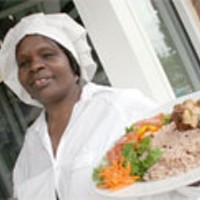
Island Beat
Jul 13, 2005 -
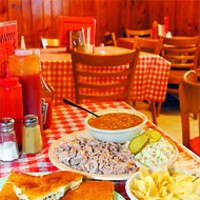
As If On Cue...
Jul 6, 2005 -

Charlotte's Brontë
Jun 15, 2005 - More »
Latest in Food & Drink Features
More by Tricia Childress
-
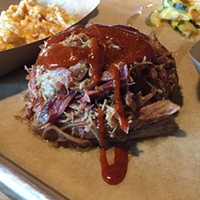
Seoul Food Meat Co's got soul
May 4, 2016 -
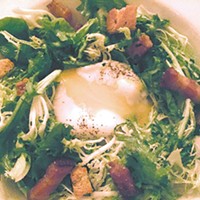
Aix en Provence flourishes in Myers Park
Apr 6, 2016 -
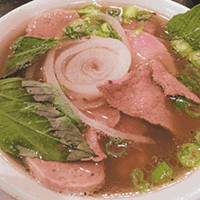
Pho and beyond at Saigon Bay Vietnamese Cuisine
Mar 2, 2016 - More »
Calendar
-

Charlotte Wine & Food Week’s Annual Sake Dinner at Mizu @ Mizu
-

Hands On Cocktail Class Featuring Gin at DTR Southpark @ DTR SouthPark
-

Charlotte Wine + Food Week Presented by Truist @ Charlotte, NC
-

Angeline’s Featuring Sciandri Family Vineyards @ Angeline's
-

Aria Tuscan Grill Featuring Allegrini - Charlotte Wine + Food Week @ Aria Tuscan Grill
-
Recipe: Ice Cream Sundae Cupcakes 6
These Ice Cream Sundae Cupcakes are filled with chocolate ganache and topped with vanilla buttercream.
-
Back of the Box: No Boil Classic Lasagne 5
Not having to boil the noodles rocks!
-
Authentic & Delicious Indian Restaurant Botiwalla NOW OPEN in Optimist Hall! 2

